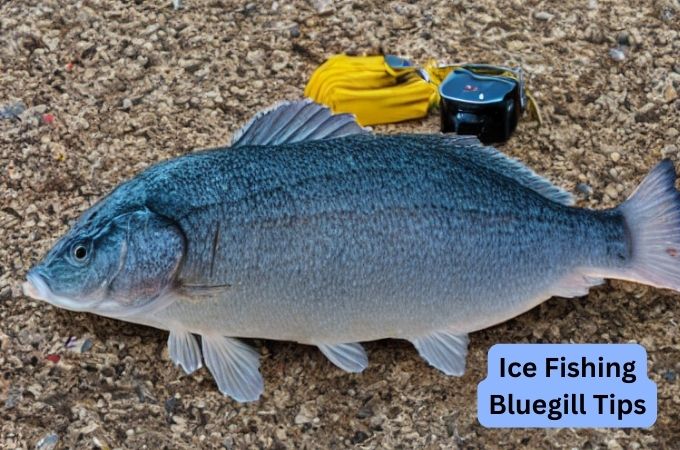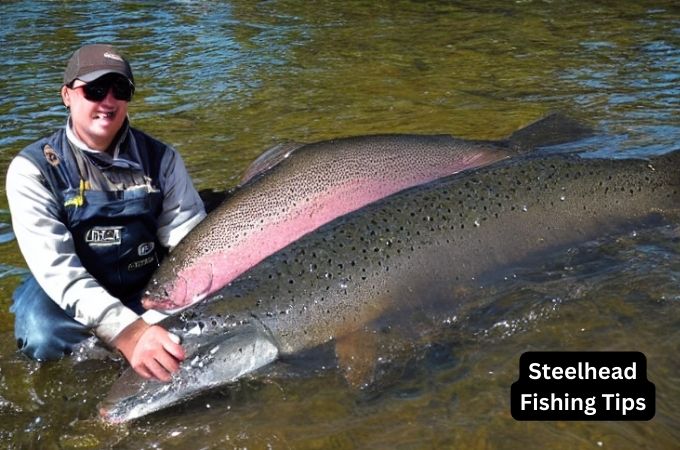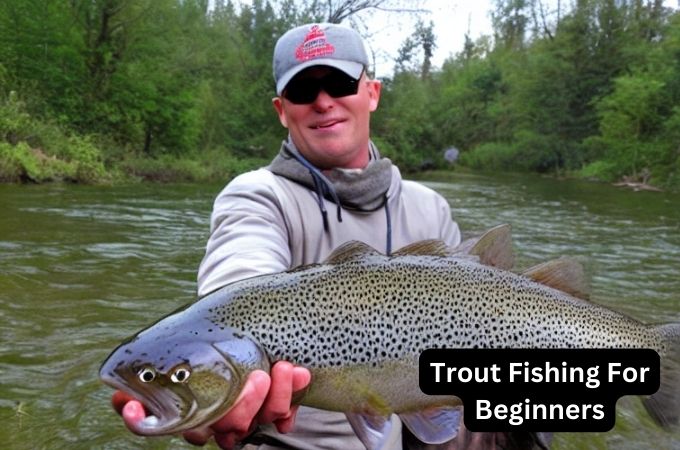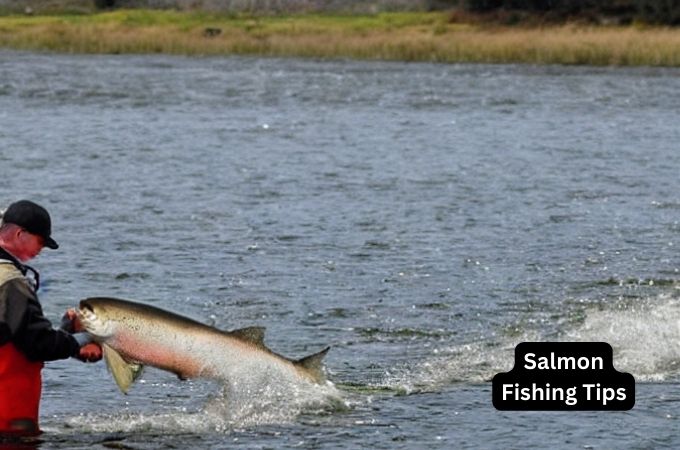Ice Fishing Bluegill Tips | Guide For Bluegill Fishing At Icy Area
Today’s topic is Ice Fishing Bluegill Tips. Ice fishing during winter is already a favorite activity amongst anglers. Ice fishing for bluegill is very easy and super fun. All you need for this fishing technique includes a few inexpensive items, and you’re set to go. You don’t need any fancy or expensive instruments to locate fish under the ice, and yet you’ll be able to catch up some pretty good bluegills right under the ice.
If you want to learn the techniques on how to fish during winter for bluegills, then simply read on as this article includes all the best tips and tricks regarding ice fishing for bluegill and how to actually end up with a lot of fish.
Ice Fishing Bluegill Tips and Tricks, You Should Keep these Points in Mind:
There are quite a number of things that you can do if you want to become an expert in ice fishing. Here is a list of things that you can do to improve your ice fishing skills.
1. Target Places With An Abundant Supply Of Fish
The very first thing that you need for ice fishing for bluegills is a lake that has an abundant supply of, well, bluegills.
It can be quite easy for you to find, since most lakes and ponds have a decent supply of this fish, especially in America.
2. Essential Things That You Need
This Is Pretty Self-Explanatory. If You’re Going Fishing Out On A Winter’s Day, Then You Most Definitely Need Proper Warm Clothing That Will Keep You Warm And Protected.
Ice fishing is pretty cold and to stay extra protected, you can always choose a pair of heavy and waterproof mittens so the cold can’t affect you much.
This won’t cost you more than a few dollars at any local fishing store or tackle shop.
Anything heavier than this would actually be problematic since you won’t be able to attach the small lures to them properly and your fishing wouldn’t be as effective.
When deciding on hook sizes, the size range from 8-14 is the most common one. You should get the smaller-sized hook, say, ranging from 12-14 range if you are planning to catch some finicky bluegills.
If you didn’t know before, there are also a lot of bluegills or panfish fishing kits or combo kits, which are sold in any regular fishing store, sports shop, or even online. Therefore, you should have no problems finding such kits.
However, if you have decided to go ice fishing all of a sudden and nothing was planned beforehand, then you can use trout flies together with a small split shot for adding weight to your bait. All these quick-witted ideas seem to work pretty well too.
These worms are not only easy to maintain but can also be readily found at any sports shop during the winter season.
However, be warned that these holes could already be filled overnight, and so plan ahead, and bring a hatchet so you can clear up any hole that was previously made.
Furthermore, not only does this bucket allow you to carry your fish only, but you can also use it to carry all your fishing gear and assortments.
Besides that, if you get tired of standing, simply toss the bucket over and you have a perfect stool for resting while waiting for your fish. It is basically like one bucket that solves multiple problems.
A Few Extra Options
There are gas-powered ice spuds on the market that are capable of cutting through the tough ice a lot faster compared to manual ones.
Although carrying one might be very difficult, they sure are a lot handy when the ice is extremely thick.
Not only are such shanties cozy and protective, but you can actually see beneath the ice since they help to block any kind of light or glare outside.
Seeing the fish swim beneath you, can actually be very exciting as they swim forward and fall for your bait.
3. Locate The Fish
Now although this can leave you scratching your head, it isn’t actually as difficult. Usually, during the early part of the ice fishing season, you can easily find some on the main parts of a lake, in places such as among the shallow weedy flats. Other than that, bluegills can also be found in small bays and cuts.
Another trick is to remember where you found a great amount of such fish during the summer. It is common to see that usually, the same spot can harbor a lot of fish during the winter season as well.
Yet another trick to knowing where you can find a lot of fish is to observe other experienced fishermen. It turns out that these fishermen have years of knowledge about which spots contain the most fish.
Some fishermen will be so experienced that they are familiar with the lake itself, or have caught fish from a certain spot the previous day, and so knows the exact location which will yield more fish.
If you happen to see such an experienced fisherman, do take note and do the same if you want to catch some fish.
4. Apply A Technique
There are several techniques that you can follow, but the most common method to attract the attention of bluegill is to jiggle your bait. You will find many a time that a little shake of your rod will actually be working for you.
However, just because striking with your rod seems to be working for the time being, it doesn’t necessarily mean that it will work all the time. On some other days, you will see that the same technique will actually yield the exact opposite result.
On days like these, when your first method doesn’t seem to be working, simply hold your bait still and the rest will take care of itself. At the end of the day, it all depends on which trick seems to be working at that time. So apply which works best, or go for a mixed approach when it comes to attracting your bluegills.
5. Locating The Target Zones At Different Seasons
It is wise to remember that fish have a certain behavior of their own and that environmental conditions affect such behavior. In order to successfully catch as many bluegills as possible, you need to understand these behaviors and adjust yourself according to the ever-changing conditions.
It can be said that the behavior of fish can vary across different lakes and from place to place. However, according to experienced fishermen, you can never go wrong if you target the weed beds.
You might be wondering how you can locate such weed beds, and that too, during icy cold winter. The best bet might be to exchange ideas with the locals of that area which include, fishermen, fishing shop employees, and owners.
An alternative way to find weed beds is to look at the color of the water when the hole is cut. If the water is clean, that means there is weed underneath. If however, the water is dark in color or muddy, then there’s actually no weed.
6. Identify The Distance And Size Of The Fish
you might fish blindly and get lucky if you get a good catch. Nonetheless, having in-depth knowledge about the depth and the position of the fish will give you a better idea about fishing in ice and increase efficiency. You can also use a portable gadget, such as a fish finder, which can help you gauge the distance of the fish, and the position and help you choose better.
Some fishermen exclaim that a flasher is better than a fish finder since it allows you to locate your fish species, especially when it is only a few inches away. However, on a fish finder, when your fish is close by, it’s difficult to tell because you don’t see it clearly and all you see is a blob.
Another benefit of the flasher is that it actually portrays the size of the fish, thus allowing you to choose the biggest one of all among the rest.
7. Maintaining Safety On Ice
Fishing on ice may be fun, but it also comes with its own risks. Every frozen lake or pond which allows fishing will have a safety scale along with it. The level of risk is usually associated with the level of snow. The thicker the snow, the safer you’ll be.
Normally, snow that reaches up above 4 inches or so is considered safe for ice fishing and other activities on foot.
8. Position Your Ice Jig Right
It is very important that you place your jig the right way if you want to catch some fish. Commonly, the jig is placed vertically in the water, resembling a teardrop shape. Yet still, this option doesn’t always work.
When you notice that the fish has stopped biting a vertical jig, then it’s time to switch up the position and place a horizontal one instead.
9. Replace The Jigs When Necessary
This tip is an entailment of the previous one. When you find out that your jigs aren’t attracting much fish, you can try changing the size of your jigs.
Switch between small jigs to big ones, as this will help to attract fish of different sizes. The color of jigs can help at times too, but it is the size that you want to focus on mostly.
10. Lure Your Catch
In order to catch as many fish as possible, you can try attracting your fish with some additional worms or spikes. Simply crush whatever bait material you have at hand, and drop them down the ice hole.
Doing this will not only get fish rushing towards the food but will also help you get more fish easily as they will bite more aggressively.

Final Words:
So now after reading this article on ice fishing bluegill tips, hopefully, you have successfully learned a technique for bluegill fishing in an icy area. If you were not as confident to go ice fishing, now you know most of the important tips and tricks on how to go ice fishing for bluegills during winter and make the most out of your fishing experience.





